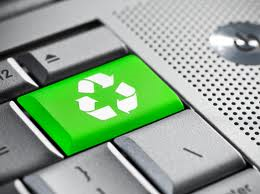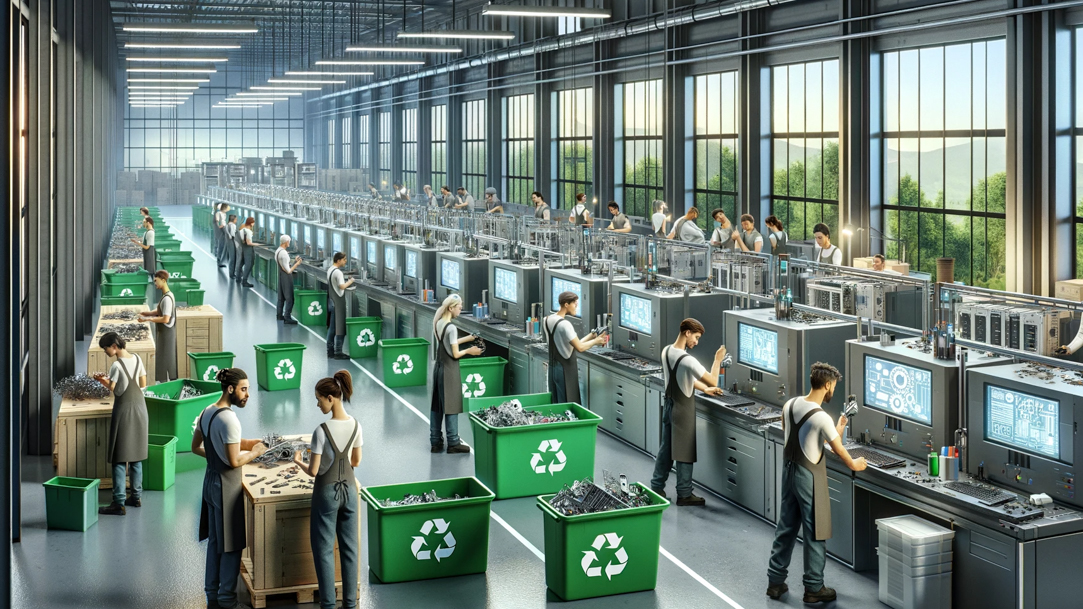Choosing an eco-friendly computer starts with understanding what makes a computer green. It’s about more than just low energy use; it’s also about sustainable materials and ethical production.
In today’s tech-driven world, making environmentally conscious choices matters. Computers are essential, but they can also harm the planet. Many contain harmful materials and consume lots of energy. Knowing how to pick an eco-friendly computer can make a big difference.
This guide will help you understand key factors like energy efficiency, recyclable materials, and responsible manufacturing. You’ll learn to balance performance with sustainability. Ready to make a green choice? Let’s dive in and explore how to choose a computer that’s better for the environment.
Introduction To Green Tech
Choosing an eco-friendly computer involves considering energy efficiency and sustainable materials. Opt for devices with Energy Star ratings and recyclable components. Such choices help reduce environmental impact.
Why Eco-friendly Computers Matter
Eco-friendly computers help protect our planet. They use less energy and create less waste. This means fewer harmful chemicals in the air. It also means less e-waste in landfills. By choosing green tech, we help save resources. We also reduce pollution. Every small step counts. Together, we can make a big difference.
Benefits Of Green Technology
Green tech is good for the Earth. It uses less power. This saves money on bills. It lasts longer, so you buy less often. This means less waste. Green tech is also safer. Fewer chemicals mean cleaner air. Choosing eco-friendly products is smart. It helps you and the planet.
Energy Efficiency
Energy Star ratings help you find efficient computers. These ratings show how much energy a computer uses. Higher ratings mean more savings. Look for computers with high ratings. This saves you money and helps the planet.
Power consumption is another important factor. It tells how much energy a computer uses. Low power consumption means less energy waste. This makes your computer greener. Check the specs before buying. Choose a computer that uses less power.
Sustainable Materials
Selecting an eco-friendly computer involves choosing sustainable materials. Opt for devices made from recycled plastics and responsibly sourced metals. This reduces environmental impact and supports green practices.
Recycled Components
Many eco-friendly computers use recycled parts. These parts come from old electronics. This helps reduce e-waste. Recycled plastics and metals are common. They save resources and energy. Choose a computer with a high percentage of recycled materials. Look for certifications. EPEAT and Energy Star are good signs. These labels show the product meets eco standards.
Biodegradable Materials
Some computers use biodegradable materials. These materials break down naturally. They do not harm the earth. Biodegradable plastics are one example. They come from plants. Another example is bamboo. It grows fast and is very strong. These materials are used in cases and keyboards. They help reduce pollution. Always check the product details. Make sure the materials are eco-friendly.
Manufacturing Practices
Companies should pay fair wages to workers. Workers must be in safe conditions. Some brands care for worker rights. They follow ethical guidelines. They avoid child labor and forced labor. Workers receive proper training. It is important to check brand policies. Some companies share their labor practices online. This helps in making informed choices.
Manufacturing processes affect the environment. Choose brands that reduce emissions. Look for those using renewable energy. Some companies use recycled materials. This reduces the need for new resources. Check if the brand has carbon offset programs. These steps can reduce the carbon footprint.
Longevity And Durability
Choose an eco-friendly computer with longevity and durability. Focus on robust materials and reliable components for lasting performance. This reduces electronic waste and promotes sustainability.
Build Quality
A computer with strong build quality lasts longer. Metal cases are better than plastic. Solid-state drives (SSDs) are more durable than hard drives. Check for sturdy hinges on laptops. Quality components mean fewer repairs.
Warranty And Support
Choose a computer with a long warranty. Three years is better than one year. Good support services help solve problems fast. Look for 24/7 support. Online chat is helpful. A strong warranty and good support mean a longer-lasting computer.

Credit: primetechsupport.com
End-of-life Disposal
Many companies offer recycling programs for old computers. These programs help keep electronic waste out of landfills. You can drop off your old computer at a local recycling center. Some brands even offer mail-in options. Make sure to erase all personal data before recycling.
Some stores offer trade-in options for old computers. You can get a discount on a new computer by trading in your old one. This is a good way to save money and reduce waste. Check with your local stores to see if they offer trade-in programs. Remember to back up your data before trading in.
Eco-friendly Brands
Some companies lead in green tech. Apple focuses on reducing waste. They use recycled materials. Dell also works hard. They aim for zero waste. HP designs energy-saving computers. Lenovo uses eco-friendly packaging. These companies care about the planet.
Check for certifications. Look for Energy Star labels. They mean energy efficiency. EPEAT ratings show eco-friendly products. TCO Certified means good for the environment. These labels help you choose wisely.

Credit: www.microsoft.com
Cost Vs. Value
An eco-friendly computer might seem expensive at first. You may need to spend more upfront. But this cost brings great value. Better for the planet. Better for you.
Eco-friendly computers save money over time. They use less energy. Lower electricity bills. They last longer too. Less need to replace parts. Fewer repairs. Great value in the long run.
User Reviews And Ratings
Customer feedback is very important. It shows real experiences with eco-friendly computers. Look for positive reviews. They often mention long battery life and low energy use. Also, check if users face any technical issues. A high rating means the product is reliable.
Experts provide detailed analysis. They test the computers for performance and sustainability. Trust their reviews. They often compare different brands. Experts also highlight innovative features that save energy. Their opinions help in making a smart choice.

Credit: www.factorydirectpromos.com
Frequently Asked Questions
What Makes A Computer Eco-friendly?
An eco-friendly computer uses less energy, contains recyclable materials, and has a longer lifespan. These features reduce environmental impact.
How Can I Identify Energy-efficient Computers?
Look for the Energy Star label. It ensures the computer meets energy efficiency guidelines set by the EPA.
Are Refurbished Computers Eco-friendly?
Yes, refurbished computers are eco-friendly. They extend the life of existing devices, reducing electronic waste and conserving resources.
Which Materials Should I Look For In Eco-friendly Computers?
Opt for computers made with recycled or sustainable materials. Avoid devices with harmful chemicals like mercury and lead.
Conclusion
Choosing an eco-friendly computer helps the planet. It also saves energy. Look for devices with good energy ratings. Check for recyclable materials in the product. Consider buying refurbished computers. They work well and reduce waste. Make small changes for a big impact.
Your choice can inspire others. Start today. Make a difference with your next computer purchase.
